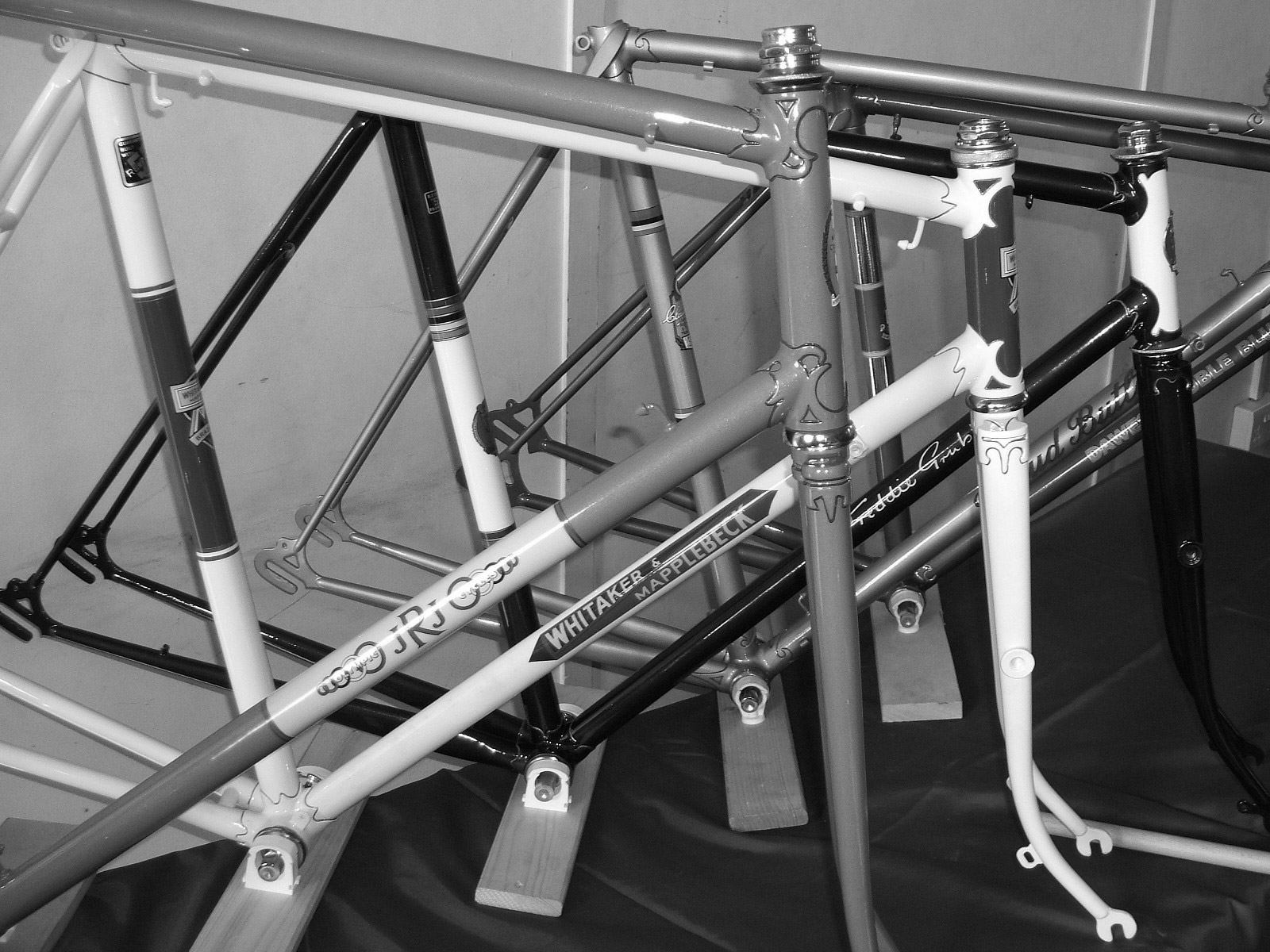Super Champion Osgear
Posted: Wednesday 12th August 2020
We have looked at various derailleur gears in Design Classics which have all been landmarks and which have contributed to the design of gears we use today.
The Super Champion gear or Osgear as it was known in England does not fit into this mainstream development of the derailleur. However it was a for a few years the most widely used racing derailleur. Gears were banned for professional riders in the Tour de France in 1919 and the ban was not lifted until 1937. In France quite a few pro riders started using derailleurs in other races in the early 1930s. From those available including the very successful Simplex Champion du Monde it was the Super Champion gear that was nominated as the only gear allowed in the 1937 Tour de France with the lifting of the gear ban. In 1938 Italian riders were allowed to use the Vittoria Margherita gear too.
The Super Champion gear was manufactured near Paris by a company owned by Oscar Egg who prior to World War I had been a top racing cyclist. Oscar Egg’s first designs were inspired by the 1928 Italian Vittoria. Both used a sprung tension arm, mounted on the chainstay and placed the striking fork above the chainstay, so requiring back-pedalling to change gear.
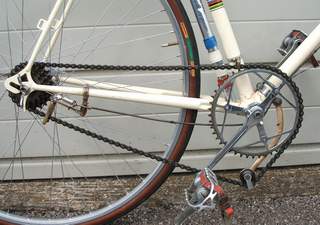
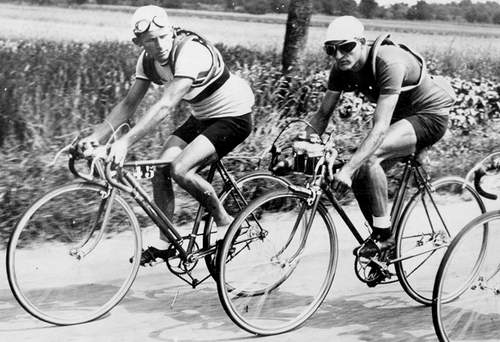
This first Oscar Egg gear, the Champion was introduced in 1932. By 1935 it had evolved into the Super Champion or Osgear and was the most popular racing gear on the continent. Crucially the fork to shift the chain had been moved to under the chainstay in the bottom run of the chain so removing the necessity for back pedalling when changing from one sprocket to the next. The gears from Oscar Egg’s factory were a big success – in 1934 they sold 45,000; 1935 138,863; 1936 343,209 and over a million striking-fork derailleurs had been produced by 1939, only Simplex were a serious rival in this period. In England the Super Champion gear was still very popular in the middle 1940s amongst road racers.
The Super Champion’s design was very simple to manufacture and it was light and simple to fit. The shift lever had stops for each gear though the lever had to be overshifted before being dropped back into the stop. The tension arm was initially mounted on the forward end of the chainstay but in 1936 was transferred to lower end of the down tube or if mounted on a braze-on the underside of the bottom bracket shell. Utility versions of the Super Champion gear retained the chainstay mounting for the tension arm. The braze-on version of the gear used a shorter tension arm though some riders preferred using the longer arms even when fitted to a bottom bracket braze-on. Mounted on a clip (or occasionally a braze-on) at the rear of the chainstay was a simple fork operated by the control cable to move the chain from one sprocket to another. Most gears were also supplied with a chain guide to ensure that the chain stayed on the chainwheel. And all gears were supplied with a spoke protector to prevent the gear fork from being put into the wheel spokes – there were no adjustable stops to control the swing of the fork. Initially it was designed simply as a 3-speed gear but later versions for 4-speed and 5-speed freewheels were made available.
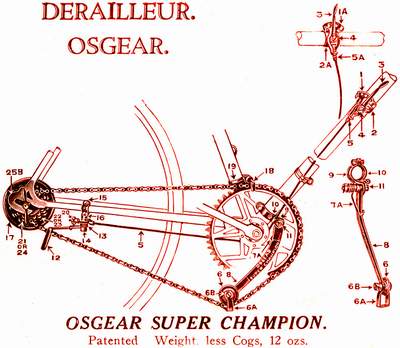
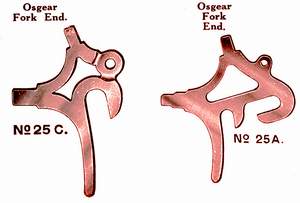
Super Champion timeline
1932 Introduction of Champion gear
1933 First version of Super Champion gear but still with changing fork in the upper run of the chain
1934 First Super Champion gear with fork in lower chain run
1936 Tension arm moved to lower end of down tube. Pro version with additional cable control to tension arm to lower chain tension when chnging gear
1937 4-speed 3/32in versions available in France and first year of braze-on version
1951 First 5-speed version in the UK
Other swinging arm derailleurs
Vittoria
It was introduced in 1928 and consisted of a rod operated derailing fork mounted on top of the chain stay. The tension was maintained by a spring-loaded arm mounted behind the bottom bracket. This was eventually developed into the Vittoria Margherita (see image right). The long rigid lever tension arm, set manually, was fitted behind the bottom bracket on the chain stay. The hand contact part of the lever was set in a ratchet faced slotted quadrant fitted above the bottom bracket between the seat and down tubes. The chain was derailed by a striking fork above the chain stay operated by a combination of flexible and rigid rods. It was used in the thirties and early forties with great success in Italy. Finally post WWII there was a version with changing forks in the lower run of the chain.
Cyclo Ace
Cyclo’s development of the Super Champion was operated by twin cables. It was introduced for 1937 as a close/medium-ratio three-speed striking-fork derailleur. By 1953 a 1⁄8 chain four-speed was listed but the Ace was discontinued by 1955.
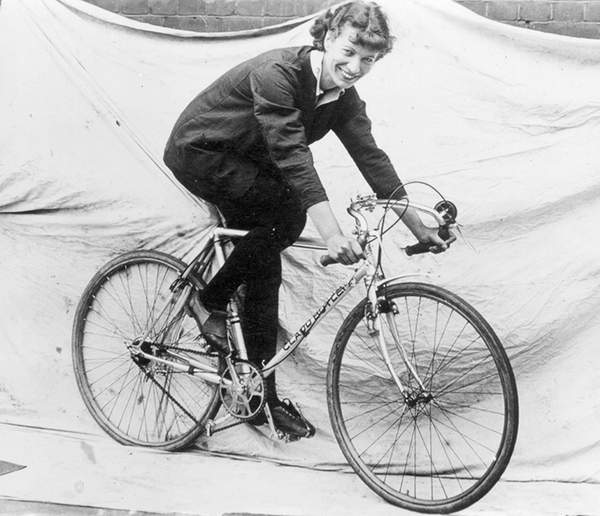
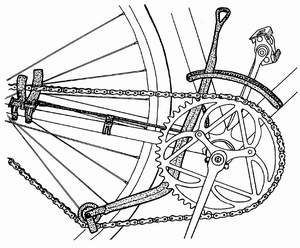
Simplex Standard
Very similar to the Super Champion it was introduced around 1936 and was not manufactured post-war.
Prior
Very similar to the Super Champion – made only pre-war as far as I know but details are sketchy.
Cervino
A post-war development by the Vittoria brothers it was the ultimate incarnation of the Super Champion with fully automatic variable chain tension, a rubber coated tension pulley for quieter running it was used by Gino Bartali in 1949 and 1950.
Another example of an Osgear, fitted to a 1951 Gillott, can be seen in Classic Components.
Posted: Wednesday 12th August 2020
This article appears in the following categories.
Upcoming Events
Whether you are looking for a gentle social meet up, or a 100-mile ride browse the community’s upcoming events and plan your next weekend outing.
